Past editions
Since 2013 Frame Contemporary Art Finland has been the commissioner and producer of the exhibition of Finland at the Alvar Aalto Pavilion.
In the 60th International Art Exhibition – La Biennale di Venezia Pavilion of Finland presented The pleasures we choose, an exhibition by artists Pia Lindman, Vidha Saumya, Jenni-Juulia Wallinheimo-Heimonen, curators Yvonne Billimore and Jussi Koitela, and architectural designer Kaisa Sööt. The Biennale was open 20 April – 24 November, 2024.
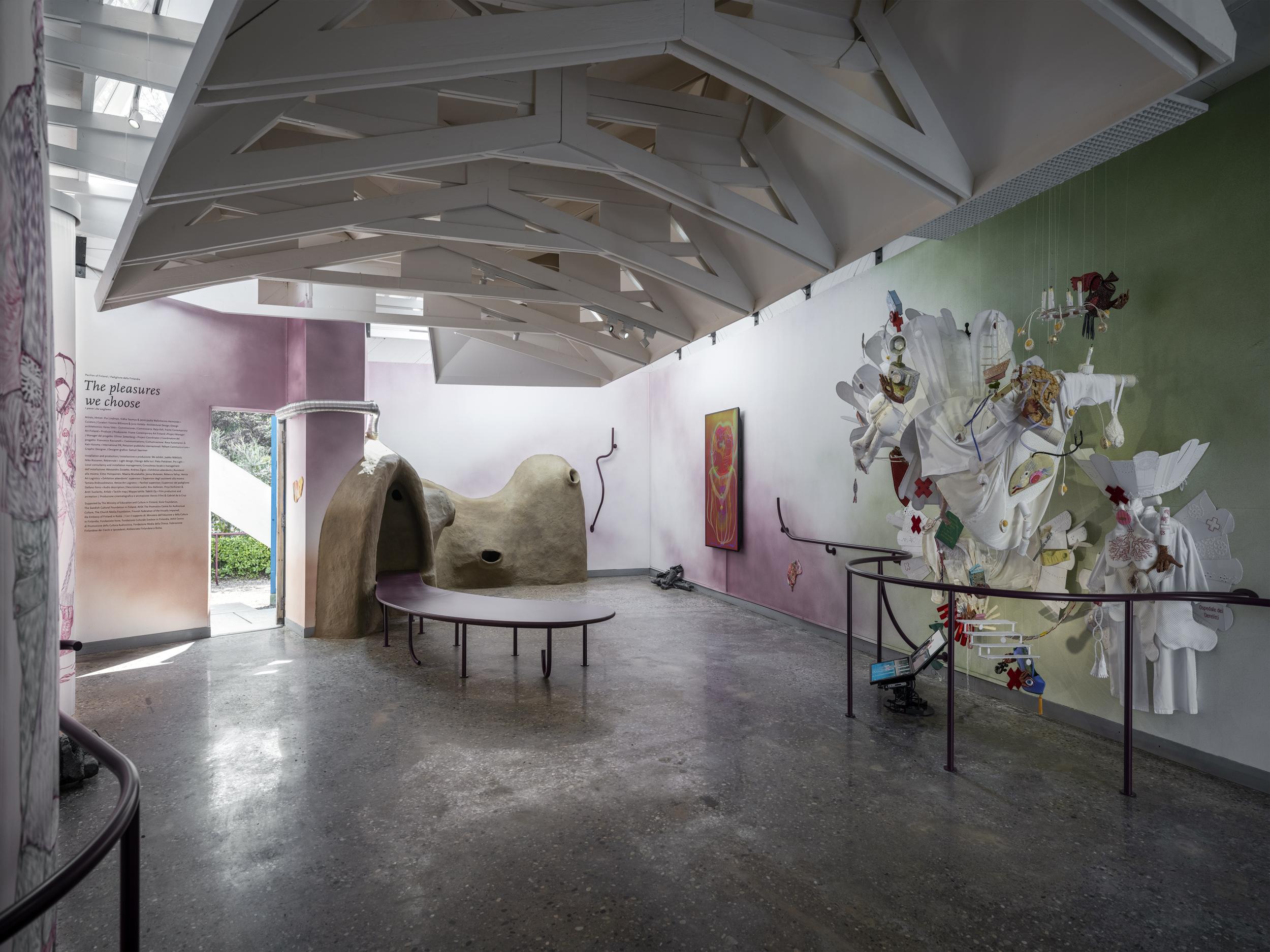
Exhibition: The pleasures we choose
Blurring the boundaries between art, architecture, and social commentary, the Pavilion of Finland brings together three artists for whom art, life, and activism are intertwined.
Pia Lindman, Vidha Saumya and Jenni-Juulia Wallinheimo-Heimonen’s practices are acutely informed by their embodied experiences of structural, environmental and social imbalances. Articulated through a wide range of materials and processes – including drawing, needlework, sculpture and healing – their works celebrate the pleasure of the personal as a powerful means of reimagining the world as we know it.
Following mercury poisoning, artist and healer Pia Lindman experiences heightened sensitivity of the nervous system and awareness of the micro-signals within her body. She translates these subsensorial signals into visual images, melodies, words, and colours and incorporates them into artworks that explore the nuances of different environments and social situations. In the exhibition, Lindman’s work Collectivities Cycle takes the form of an air-conditioning clay sculpture that exposes visitors to the sculpture’s organic matter and the microbes it supports. Accompanying “living digital paintings”—emerging from her ongoing participation in an online Tong Ren healing community—radiate with images that slowly glitch and shift into different bodily forms and energies.
Often engaging with the intricate relationship between human presence and the environment, Vidha Saumya’s works challenge the norms of aesthetics, gender, academia and nation-state. In the pavilion, Saumya’s work To all the barricades… the rumour got you is presented as a bricolage of three distinct bodies of work across drawing, sculpture and cross-stitch. Her multi-panel ballpoint pen drawing on silk cloth depicts an assembly of individuals waiting in line. Saumya explores the queue, an embodiment of time spent waiting, as an offspring of bureaucracy and trickle-down economy, and thus a universally recognised social architecture. Meanwhile, a series of sculptures mimics the insignificant debris lining the city sidewalks. Occupying the liminal space between utility and obsolescence, this ‘immortal trash’ changes form but does not perish. Lastly, a constellation of cross-stitched textiles replicate stains, patches of moisture, mold, pollutants, or toxins, questioning who and what is rendered a contaminant in our natural and social climates.
How Great is Your Darkness by Jenni-Juulia Wallinheimo-Heimonen, a multi-dimensional artwork containing a textile installation, moving wheelchair sculpture and short videos, points to the hate speech people with disabilities are subjected to—particularly from within the medical and social care industries. Across her practice as an artist and activist, Wallinheimo-Heimonen advocates for a shift from the medical model of disability, in which those with disabilities are typically “treated” to fit society, towards a social model, in which it is the ableist cultural attitudes that need to be transformed. The fantastical scenes she creates re-story people with disabilities as their own agents of transformation. Under the guise of humour, parties, pearls, and exquisite stitch work, her piece is thickly laced with references to the hate speech, guilt and stereotyping that people with disabilities are forced to endure in their everyday lives.
The artists’ works are connected conceptually and materially through architectural interventions designed by Kaisa Sööt in collaboration with the working group. Reimagining the pavilion and the kind of art, bodies and experiences it can support, the exhibition’s “access architecture” considers access and bodily needs across registers whilst encouraging new sensory experiences. These support structures materialise inside and outside of the pavilion – designed by Alvar Aalto in 1956 – from a handrail extending from the Giardini’s grounds to the access tools, spatial guides and places to rest and connect inside the pavilion. Acting as a guiding element, the thoughtful exhibition design considers different rhythms and durations of engagement.
The publication:
The exhibition is accompanied by a publication edited by Yvonne Billimore and Jussi Koitela, published by K. Verlag and Frame Contemporary Art Finland, and designed by Samuli Saarinen. Intended as a handbook, it extends the core practices, processes, and politics of the project beyond the pavilion’s walls through various contributions. The publication is available also online as an open access PDF. There is also an audio description available about the exhibition.
The exhibition publication, audio description and other exhibition materials
Partners and Supporters:
The main supporter of The pleasures we choose is the Ministry of Education and Culture in Finland. Other supporters include the Kone Foundation, The Swedish Cultural Foundation in Finland, AVEK The Promotion Centre for Audiovisual Culture, The Church Media Foundation, Finnish Federation of the Visually Impaired and the Embassy of Finland in Rome.
Close Watch, a video installation by artist Pilvi Takala, premiered at the Pavilion of Finland at the 59th International Art Exhibition – La Biennale di Venezia. The exhibition was curated by Christina Li.
The 59th edition of the Venice Art Biennale was held from 23 April to 27 November, 2022.
Exhibition: Close Watch
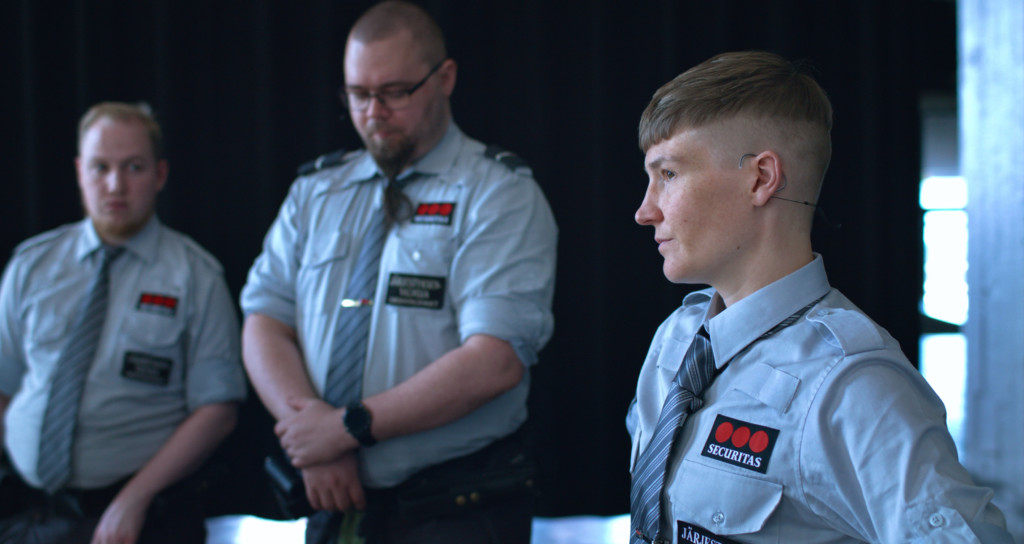
Close Watch is a multi-channel installation based on Pilvi Takala’s experience as an undercover artist working as a fully qualified security guard for the global company Securitas. The piece centres on workshops Takala developed afterwards that respond to issues encountered during her six-month post at one of Finland’s largest shopping malls.
Working covertly, staging social situations and infiltrating communities, Takala exposes the invisible boundaries of acceptable conduct and norms in the public and private spheres. In Close Watch, the artist explores security both as a concept and an industry to consider how it defines public space and the behaviour tolerated within it.
The video work presents scenes from workshops in which the artist and five of her ex-colleagues – and three actors – re-enact case studies extracted from Takala’s field research. Using the participatory technique of Forum Theatre, which focuses on power dynamics and social injustice, participants test out alternative strategies in situations come across on the job that involved excessive use of force, racist language or toxic behaviour. The artist’s former co-workers reflect on their roles and responsibilities as security personnel who exert power to maintain order.
At the biennale, the multi-channel video installation was displayed within site-specific exhibition architecture by Studio L A that divided the Pavilion of Finland into two interrelated presentations via a one-way police mirror. Societal power dynamics between the watchers and watched were called into question in this active, physical field of spatial politics.
Close Watch is inspired by Takala’s interactions with security guards in past work and sheds light on an underpaid, undervalued and underregulated workforce who must navigate their influence in society. The ethical dilemmas of their profession are the focus here, informing an exhibition that reflects on how control is enforced within the security sector, and ultimately how we govern each other’s behaviour.
Publication and Website
The exhibition was accompanied by a catalogue published by Mousse Publishing. The publication presents Pilvi Takala’s research for the work, including interviews with her former colleagues and field notes from the time of her employment, as well as a curatorial essay by Christina Li. The publication can be ordered from the publisher’s website. An accompanying website (closewatch.site) hosted further digital material.
Partners and Supporters
Saastamoinen Foundation was the main partner for Close Watch.
The main supporter of Close Watch was the Ministry of Education and Culture in Finland. Other supporters included EMMA – Espoo Museum of Modern Art; AVEK: The Promotion Centre for Audiovisual Culture; the Finnish Cultural Foundation; Arts Promotion Centre Finland and the Embassy of Finland in Rome.
Further support was given by Helsinki Contemporary, Carlos/Ishikawa, London and Stigter van Doesburg, Amsterdam representing Pilvi Takala.
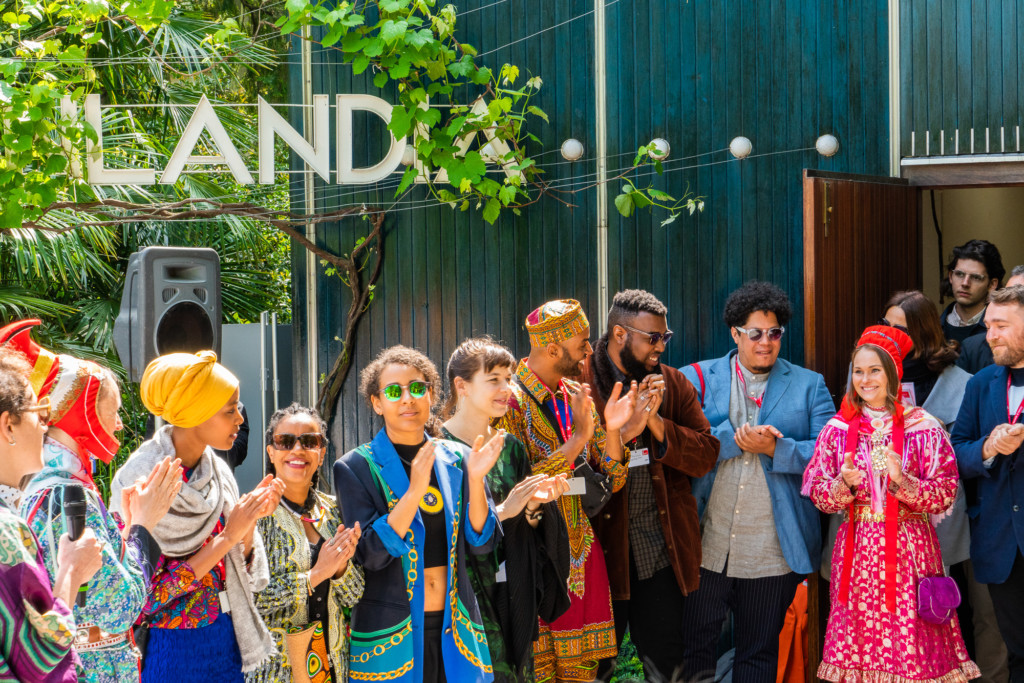
The Miracle Workers Collective (MWC) presented their inaugural project, A Greater Miracle of Perception, for the Finnish Alvar Aalto Pavilion at the 58th International Art Exhibition – La Biennale di Venezia.
The MWC is formed and informed by a transdisciplinary and anational community of artists, filmmakers, writers, intellectuals, performers, and activists, including writer Maryan Abdulkarim scriptwriter Khadar Ahmed writer Hassan Blasim choreographer Sonya Lindfors artist Outi Pieski artist Leena Pukki artist Martta Tuomaala artist Lorenzo Sandoval cinematographer Christopher L. Thomas storyteller Suvi West curator Giovanna Esposito Yussif curator Christopher Wessels and curator Bonaventure Soh Bejeng Ndikung.
Exploring the miracle as a poetic vehicle from which to expand perceptions and experiences, the exhibition presented MWC’s collective film work The Killing of Čáhcerávga (2019), which was in dialogue with the site-specific sculptural installation Ovdavázzit – Forewalkers (2019) by Outi Pieski.
The 58th edition if the Venice Art Biennale was held from from 11 May to 26 November, 2019.
Exhibition: The Greater Miracle of Perception
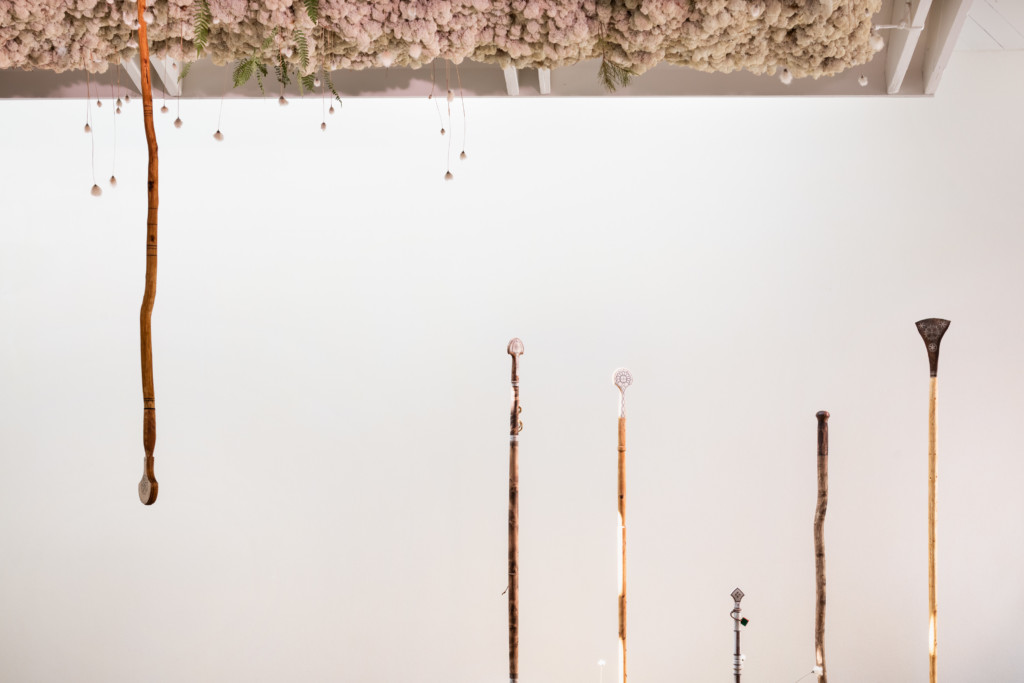
Miracle Workers Collective’s film work The Killing of Čáhcerávga is a collision of five different short films that, together, tell a disjointed, communal narrative. Employing a call-and-response strategy, the film expresses a politicised dialogue around indigeneity, movement and migration in contemporary Europe.
The collective share an interest in exploring the potentiality in disciplinary disobedience.
Travelling through dreamscapes, lonely snowy plains, absurdist capitalist underwaters, greenhouse gardens and desert landscapes, the film stretches into a practice of impossible spatial rules, strange dialogue practices, and inconclusive, unresolved scenic endings.
Expanding beyond the confines of the pavilion, Outi Pieski’s Ovdavázzit – Forewalkers similarly prompted questions around movement and borders. Paying homage to the artist’s Sámi ancestors, the installation broiught into dialogue the Sámi traditional handicraft, duodji, with contemporary art.
Sharing both collective and personal histories and heritages, the installation gave voice to the complex internationalist discourse around the Sámi people’s collective struggle against colonial and nationalist enclosures.
Ovdavázzit – Forewalkers transported elements of the arctic tundra to the pavilion, through the series of “dancing” birch trees and reindeer lichen, a primary food source for reindeers. Arctic peoples have thrived in a harsh environment for millennia, thanks to their extensive knowledge of the land and waters. This ancestral, ecological knowledge is increasingly recognised as a crucial source for understanding Arctic biodiversity and to develop effective strategies for its conservation, learning from the Sámi philosophy of ‘agreeable life’, soabalaš eallin, that points to a life in harmony and accordance with the earth.
In addition, Movable Membrane (2019), a modular set by Lorenzo Sandoval was inviting audience to stop, pause and reflect. It was inspired by an element developed by architects Aino Marsio-Aalto (1894–1949) and Alvar Aalto (1898–1976) as one of their iconic signatures: the curved surface. The form worked as a deconstruction and a re-engagement of their work, rethinking the role of architecture in the construction of the welfare state – which at times has been presented metaphorically as a miracle itself.
Publication
In 2017, the Pavilion of Finland presented The Aalto Natives, a collaboration between artists Nathaniel Mellors and Erkka Nissinen at the 57th International Art Exhibition – La Biennale di Venezia. The exhibition was curated by Dutch curator Xander Karskens.
The 57. edition of the Venice Art Biennale was held from 13 May to 26 November, 2017.
Exhibition: The Aalto Natives
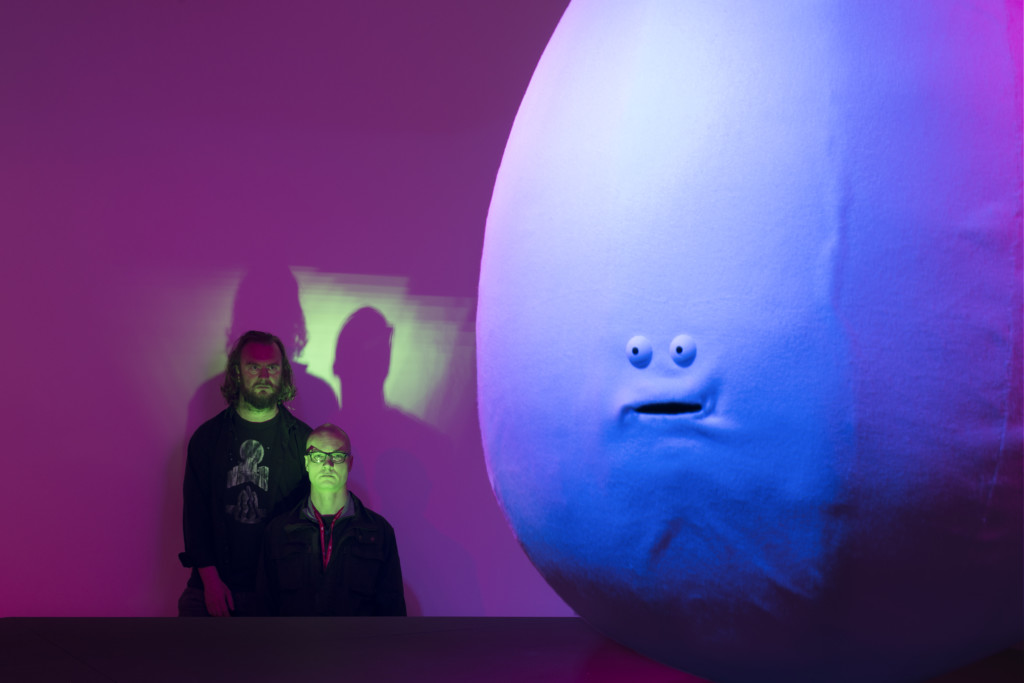
Individually known for their irreverent and often comedic story-driven work, Nathaniel Mellors and Erkka Nissinen focus on various clichés surrounding Finnish history and national identity for The Aalto Natives.
Conflating ideas and tropes from archaeology, anthropology and science fiction, the work re-imagines Finnish society through the eyes of two messianic outsider figures, Geb and Atum, who are represented by talking animatronic puppets.
The story presents Geb and Atum as terraforming higher beings, who re-visit the Finland they have created millions of years earlier, and who try to make sense of the culture that has developed in the meantime. They are engaged in a dialogue in which they introduce a series of video vignettes on Finnish creation mythology, contemporary Finnish society and their vision for the future of Finland. Within this narrative framework, Mellors and Nissinen playfully critique religion and the nature of human existence, to reveal the systemic flaws at the heart of cultures dominated by rationalism and the fetishization of progress.
Various visual idioms – including HD videos of old school Muppet-style puppeteering, 3D CGI, and hand-drawn stop-motion animation – conjure the universe and psychology of their characters. These different media and technologies are synchronized into a dynamic and immersive theatrical experience.
Curator Xander Karskens says “The Aalto Natives explores themes such as the invention of the nation state and the origins of culture by way of absurdist satire. Dressing its intellectual ambitions in deceivingly comical gear, the work addresses the complex challenges our globalized world faces today, like neoconservative nationalism, intolerance, and class polarization.”
Partners and supporters
Hours, Years, Aeons, a site-specific installation by the artist duo IC-98 (Visa Suonpää and Patrik Söderlund) was presented at the Alvar Aalto Pavilion of Finland at the 56th Venice Biennale in 2015. The exhibition was commissioned and produced by Frame Contemporary Art Finland, and it was curated by Taru Elfving, PhD, Frame’s Head of Programme. The mixed media installation consisted of a pencil-drawn digital animation Abendland (Hours, Years, Aeons), sound, tar, charcoal and jute. The music for double bass and electronics was composed by Max Savikangas.
The 56th edition of the Venice Art Biennale was held from 9 May to 22 November, 2015.
Exhibition: Hours, Years, Aeons
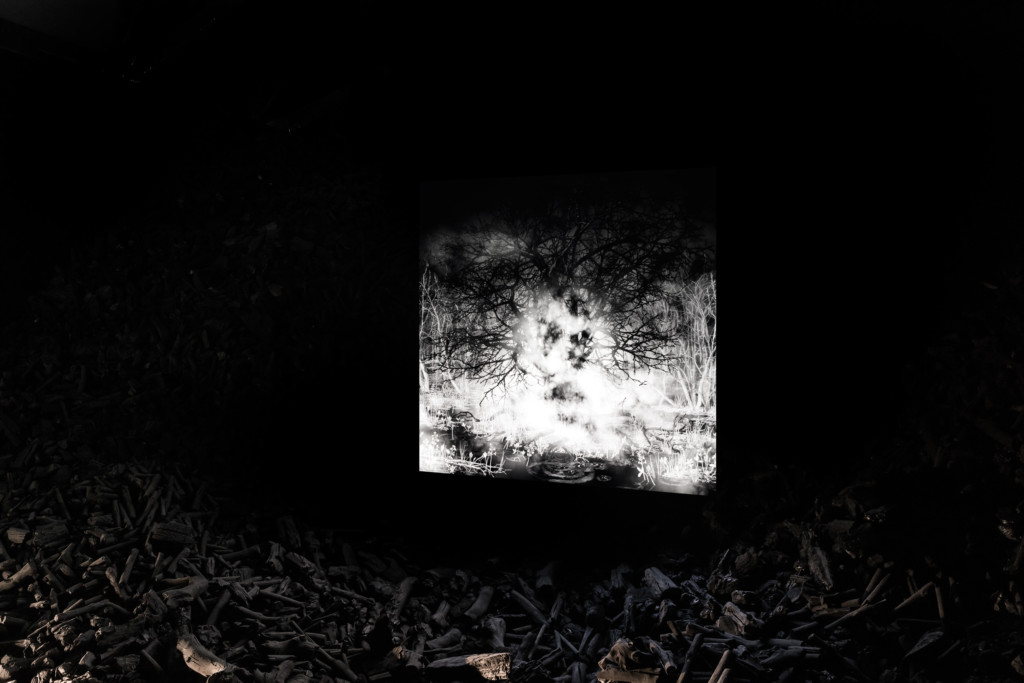
With Hours, Years, Aeons, IC-98 transformed the Alvar Aalto Pavilion of Finland, built in 1956, into a chamber that guides viewers into the Giardini on another plane of temporality. Deep time begins to resonate through fleeting cycles of life, and space appears as infinite dark matter. Here may stand not the last man, but the last tree, left to spin yarns of the past into a distant future. The garden as a microcosm of knowledge and colonial power over the world of cultural diversity, as well as biodiversity, now appears as a realm governed by the transformations that only a tree can live through.
IC-98 are known for their animations and installations creating metaphorically charged realms of uncertain coordinates. These landscapes are shaped by interlaced forces of nature and technology, navigation and exploitation, climate and migration. In Venice the viewer is invited to enter this world: The timber architecture begins to creak and tremor, while the smell of tar transports us back to early trade routes and charcoal evokes the origins of civilization as we know it.
The pavilion, as a historical document tells the tale of the nation and its growth. The welfare state and its arts scene owe their existence to the ‘green gold’ of Finland’s vast primeval forests. The wooden structures used here reflect the post-war housing boom, while the pavilion itself was a philanthropic project funded out of fortunes made in the timber industry. Today, the legacy of the forest industry consists of vigorously managed fields of trees, with wealth accumulating and liabilities dispersed across the globe. Not far from the very forests that yielded the funds for the Pavilion will soon lie a tomb for nuclear waste, the repository Onkalo, dug deep into the bedrock.
“Hours, Years, Aeons encapsulates the artists’ long-term critical investigations – from boardrooms of power and bounds of public space to ecological frontiers – into an epic new work within which matter and myth merge in the face of today’s seismic shifts,” says Curator Taru Elfving.
Partners and supporters
The Finnish exhibition at the Venice Biennale was supported by the Ministry of Education and Culture of Finland, Alfred Kordelin Foundation, Saastamoinen Foundation, Serlachius Museums, Finnish Art Society, Avotakka, Finnish Design Shop, Amos Anderson Art Museum, EMMA – Espoo Museum of Modern Art, Helsinki Art Museum and Museum of Contemporary Art Kiasma.
In 2013, the exhibition of Finland Falling Trees was held in two pavilions, the Alvar Aalto Pavilion of Finland and the Nordic Pavilion at the 55th Venice Biennale. The artists Antti Laitinen exhibited at the Alvar Aalto Pavilion of Finland and artist Terike Haapoja at the Nordic Pavilion. The exhibition was curated by Marko Karo, Mika Elo and Harri Laakso who form the curatorial team Gruppo 111.
The 55th Venice Biennale 2013 was held from 1 June to 24 November, 2013.
Exhibition: Falling Trees
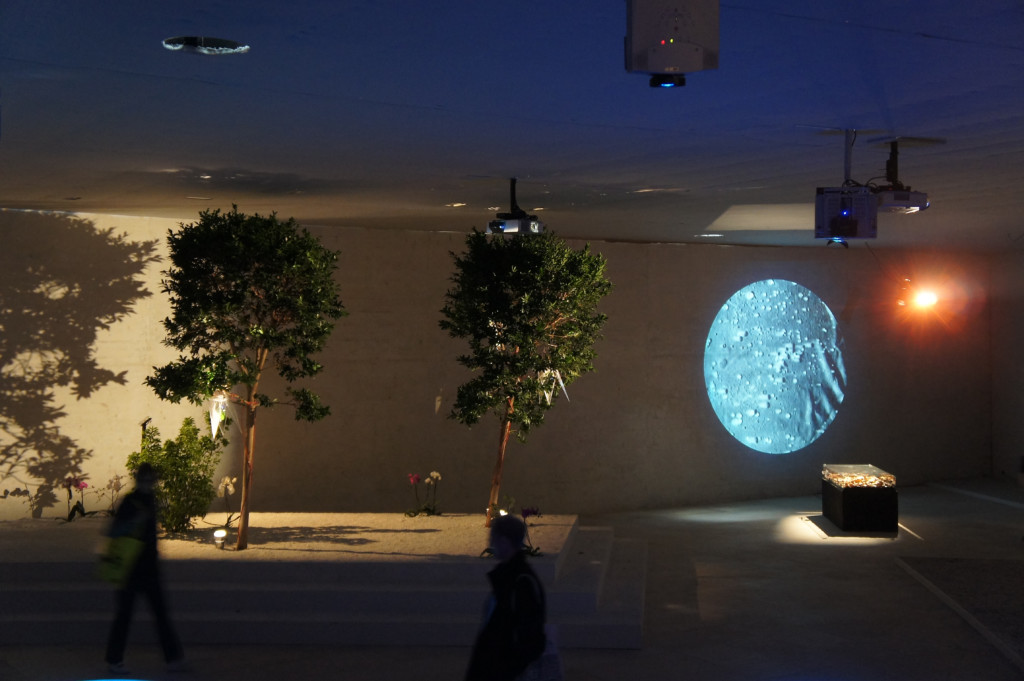
The exhibition Falling Trees gained not only its name, but also its conceptual starting point from an unexpected event in the Venice Biennale of 2011, when a large tree fell on the Alvar Aalto Pavilion, shattering it and cutting short the exhibition on display at the time.
Terike Haapoja transformed the Nordic Pavilion designed by Sverre Fehn via comprehensive architectural gestures into a research laboratory, where technology and art find their place as tools for investigating the basic questions of life and art – memory, relationship with nature, and mortality.
Antti Laitinen set up in the Aalto Pavilion an exhibition consisting of videos and photographs, installations, and performance, where uncompromising conceptual nature, absurd humour and regularity within play meet.
“In a sense, the exhibitions by Haapoja and Laitinen form a garden of knowledge; one where knowledge cannot be plucked directly from the tree, as in botanical gardens or zoos based on classification. In this garden, knowledge means shared, open and concrete participation and recognition of the active agency of nature and its different species”, say the exhibition’s curators.
“Both artists process different ways of knowing and challenge us to think about our human dimensions from a new perspective, even though they work in very different ways and with different results. Their works reveal the unpredictability in the foundation of our daily lives, while at the same time enriching the possibilities of our imagination.”
Partners and supporters
Falling Trees was supported by the Finnish Ministry of Education and Culture, Aalto University, Ateneum Art Museum, Bukowskis, DB Schenker, Espoo Museum of Modern Art EMMA, Helsinki Art Museum, University of Helsinki’s Centre for Atmospheric Sciences, Museum of Contemporary Art Kiasma, Finnish Foreign Ministry, Serra dei Giardini and the Finnish Embassy in Rome.
